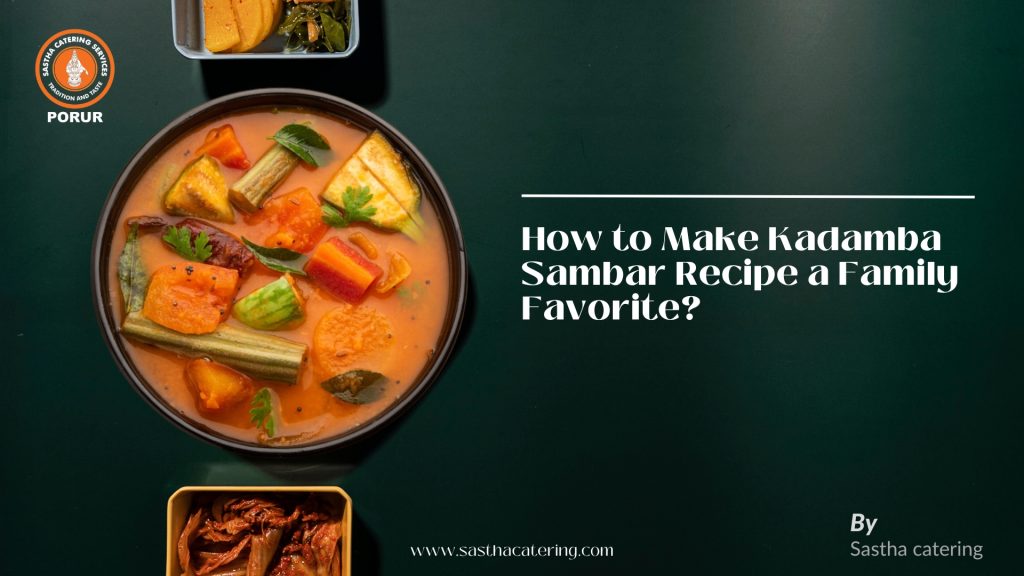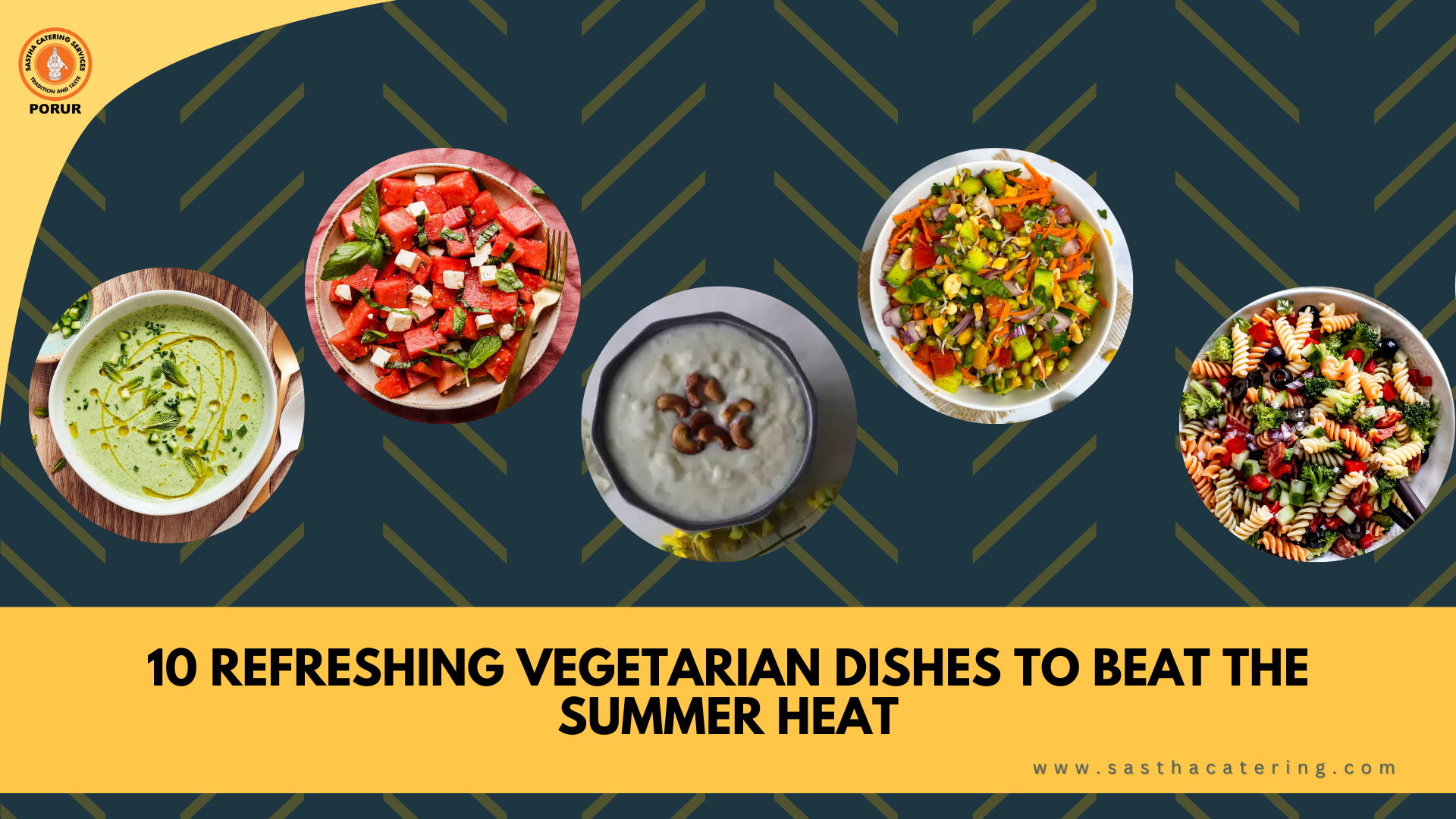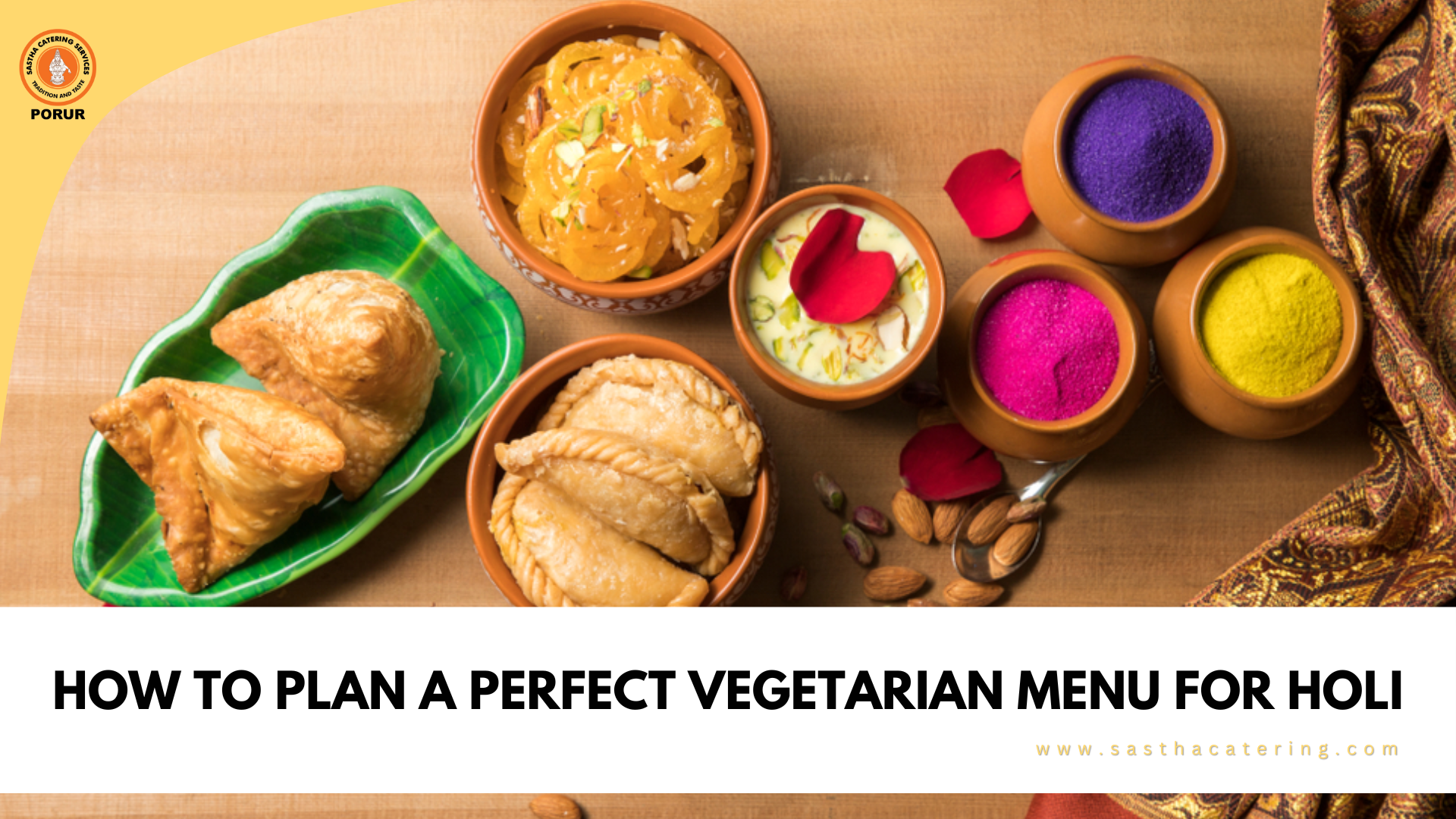
Maybe it’s because nothing beats a steaming bowl of Kadamba Sambar with your South Indian meal. Being an aroma that comes from the finest lentils and tamarind, mixed with the freshest vegetables, is a perfect blend of spice and tang, which makes one fall in love with the dish.
So, it has become one of those treasured dishes, in which every generation becomes savoured with utmost love by its families.
Whether it is supper in any of the six weekdays or a part of the grand feast, it remains to satisfy all the taste buds and warm the heart.
Even in professionally done kitchen, Kadamba Sambar has gained its place. Traditionally, it is a main staple included in feasts and functions.
You may hire the best catering services in Chennai to prepare it for you when organizing a family function or festive meeting, and your guests are sure to relish the authentic taste of South Indian staple.
History of Kadamba Sambar
Originating from the state of Tamil Nadu and Karnataka regions, this dish is being made traditionally during festivals, family gatherings, and religious celebrations. The meaning of the word “Kadamba” is a mix or assortment, which reflects the sort of vegetables that go into this healthy dish. Kadamba Sambar was originally created to use the seasonal availability of vegetables so that no vegetable is allowed to rot in season. This mixture of lentils and spices and fresh produce not only created a healthy meal but also one which was full of flavor.
Sambar itself comes from the kitchens of the Maratha rulers of Tamil Nadu, where tamarind and lentils were perfected as a whole. Over time, this grew into a Kadamba Sambar-a celebration of the extensiveness of vegetables available in the place it was prepared. The fact that it could amalgamate the distinct flavoring of several vegetables yet still remain as hearty as sambar made it a favorite for family dinners, special occasions.
Why People Adore Kadamba Sambar
The flavour in Kadamba Sambar is absolutely balanced. The sharp tamarind base with the earthy richness of toor dal (split pigeon peas) makes an excellent base for the mixed vegetables, and it is just the spices like coriander, mustard seeds, and curry leaves that add the divine fragrance to it, making each bite a joy.
In itself, this dish is also sweetly nostalgic because it reminds most people of family gatherings, festivals, and traditional celebrations. Its comforting brings back memories of good times; hence, it remains a favourite across generations.
The other fantastic advantage from Kadamba Sambar is that you can just about use any vegetable found, and thus it becomes a single versatile recipe. Each family can adjust it to fit their taste or seasonal availability; therefore, no two Kadamba Sambar bowls will taste the same.
Recipe for Kadamba Sambar
Here is a step-by-step guide on how to make Kadamba Sambar that your family would love and crave!
Ingredients:
- Toor dal (split pigeon peas) – 1 cup
- Tamarind pulp – 2 tablespoons
- Sambar powder – 2 tablespoons
- Turmeric powder – ½ teaspoon
- Asafoetida (hing) – ¼ teaspoon
- Mustard seeds – 1 teaspoon
- Curry leaves – 1 sprig
- Salt – as required
- Oil – 2 tablespoons
- Water – as necessary
Indian Vegetables (an assortment)
- Drumstick (Murungakkai) – 1, cut into long pieces
- Brinjal (Eggplant) -1, chopped
- Pumpkin -100 gm, diced
- Carrot – 1, sliced
- Potato – 1, cut into cubes
- Okra (Lady Finger)-5-6, chopped
- Tomato – 2, chopped
Fresh Sambar Masala- ingredients (to make if you have time)
- Coriander seeds – 2 tablespoons
- Dry red chilies – 4-5
- Chana dal (Bengal gram) – 1 tablespoon
- Roasted and ground fenugreek seeds – ½ tsp
- Grated coconut – ¼ cup
- Oil – 1 tsp
Instructions
Cook the Toor Dal: Rinse the toor dal well and pressure cook it with water and turmeric until soft (3-4 whistles). Mash the cooked dal and set it aside.
Fresh Sambar Masala (in case of making it from scratch): Heat a tsp of oil in a pan. Roast coriander seeds, dried red chilies, chana dal and fenugreek seeds till aroma arises. Add grated coconut; let it roast for one more minute. Let it cool and grind to fine paste.
Cook the Vegetables: In a deep pan, put all the chopped vegetables except okra and tomatoes, water and salt. Let it boil till the vegetables are soft.
Prepare the Sambar Base: Once the vegetables are cooked, add tamarind pulp, sambar powder, and asafoetida to the pot. Allow it to simmer for 5 minutes and let the tamarind cook completely.
Stir in the mashed dal and the fresh ground masala, if using. Add chopped tomatoes and let the sambar simmer for 10 minutes until all the flavors meld together. If using okra, add it now so it doesn’t get mushy.
Tadka (Tempering): Heat oil in a small pan, mustard seeds, and let the seeds splutter. Add curry leaves and fry for about 2-3 seconds. Pour this tadka to the sambar and mix well.
Final Touches: Adjust to desired consistency by adding water, if needed. Check the salt. Let the sambar simmer for a few more minutes before serving.
How to Serve Kadamba Sambar
Kadamba Sambar is just fantastic with fluffy steaming hot rice, crispy papad and tangy pickle. This thick stew is also ideal with soft idlis or crispy dosas, so one will never be bored with having it at breakfast, lunch or dinner. It is then quite lavish and indulgent when one pours over ghee as its topping. And for an extra special finishing touch one can use fresh coriander leaves to enhance the aroma.
Why Kadamba Sambar Will Become a Family Favorite
The beauty of Kadamba Sambar lies in its pleasing all palates. In fact, this dish is a very nice medley of comforting flavors and exciting varied vegetables inside. It’s hearty, healthy, and packed with nutrition, which makes it a hit with both kids and adults. Also, its versatility makes it adaptable to whatever vegetables you have at home and can be prepared at any season or preference.
With deep flavours, aromatic spices, and wholesome ingredients, Kadamba Sambar truly makes for that family favourite. Be it some quiet week day dinner or a fest-oriented get-together, it might prove to be the centre of attention in your meal. Therefore, try out this recipe and make it one of the most beloved dishes in your family’s dinner table!
Conclusion
It’s not just a dish; it embodies tradition, flavor, and family. It’s versatile, too; it can be done using a wide variety of vegetables, and the comforting blend of lentils and spices makes for a dish that brings people together.
You may have it steaming as an accompaniment to rice, idlis, or dosas; the vibrant flavors along with the heartiness of Kadamba Sambar ensure that it will be the go-to family dish.
Simplicity forms the foundation of the recipe but is accompanied by its rich flavors that guarantee every serving to not only be nourishing but soul-satisfying.
So, go gather all your ingredients, spice up things, and watch this beloved South Indian dish become the accent of your dining table!




!["Guests being served vegetarian buffet at an event in Chennai, highlighting the popularity of veg catering services. [Sastha Catering]"](https://sasthacatering.com/blog/wp-content/uploads/2025/03/Healthy-Food-Initiatives-18.png)





